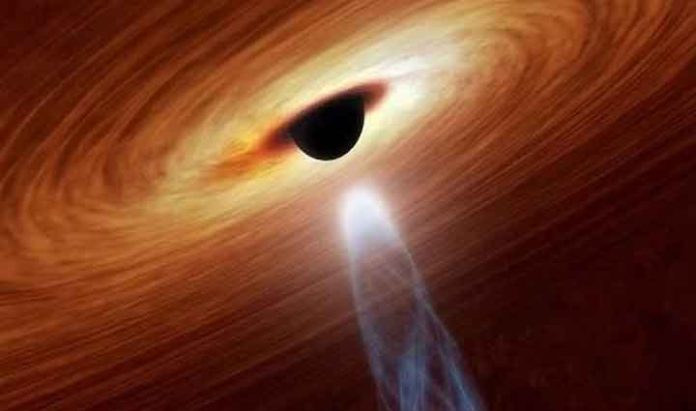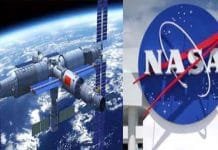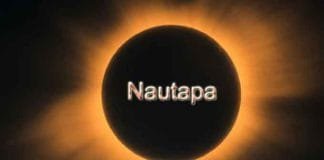Scientists Discover Most Distant Supermassive Black Hole Using James Webb Space Telescope
INVC NEWS
Washington : Scientists at the National Aeronautics and Space Administration (NASA) have made an astounding discovery using the James Webb Space Telescope. They have detected the most distant supermassive black hole ever observed. This remarkable black hole came into existence a mere 570 million years after the Big Bang. Nestled at the core of the galaxy CEERS 1019, its mass is estimated to be equivalent to 9 million suns. Additionally, researchers have identified two smaller black holes that formed approximately 1 to 1.1 billion years after the Big Bang. Furthermore, there are numerous other black holes in the cosmos with masses measuring in the billions of suns. These cosmic entities are easily detectable as they continuously devour matter, emitting a brilliant luminosity that can be observed from afar.
Similar to the black hole at the center of our galaxy, which weighs in at an impressive 4.6 million solar masses, the black hole in CEERS 1019 exhibits remarkable similarities. The Astrophysical Journal Letters has accepted three separate studies that utilized data from the CEERS survey. Rebecca Larson, the lead researcher of one of the studies, expressed their team’s focus on exploring the black holes within our closest galactic neighbors. Their findings revealed that the galaxy is actively consuming as much gas as possible while simultaneously generating new stars. Notably, the James Webb Space Telescope has also captured a breathtaking image of the planet Saturn within our Solar System.
The photograph of Saturn showcases its awe-inspiring rings, radiating a resplendent brilliance. Astronomers were captivated by this extraordinary snapshot, witnessing Saturn’s rings shining vibrantly. In addition, Saturn’s moons—Dione, Enceladus, and Tethys—were clearly visible in the image. NASA, in a statement, mentioned that this particular black hole is not as luminous as the previously discovered more massive black holes. Nonetheless, comprehending its origins, which trace back to the earliest stages of the universe, remains an ongoing challenge.
The Significance of the Discovery
The detection of this incredibly distant supermassive black hole holds immense significance for astronomers and cosmologists alike. By studying these cosmic phenomena, scientists can deepen their understanding of the early universe and its evolution. It provides crucial insights into the formation and growth of black holes shortly after the Big Bang. Additionally, the James Webb Space Telescope’s remarkable capabilities and state-of-the-art technology pave the way for further astronomical breakthroughs. This extraordinary discovery underscores the immense potential of scientific advancements in unraveling the mysteries of the cosmos.
Unraveling the Secrets of the Universe
The discovery of this distant supermassive black hole has ignited a sense of awe and wonder among scientists around the world. Its existence challenges current theories and compels researchers to explore new avenues of investigation. By delving into the depths of the universe, scientists seek to shed light on the fundamental forces and processes that shape our cosmos. With each remarkable discovery, humanity’s understanding of the universe expands, unraveling its secrets and captivating the imagination of generations to come.
Conclusion
The groundbreaking detection of the most distant supermassive black hole to date using the James Webb Space Telescope is a testament to human ingenuity and the relentless pursuit of knowledge. Scientists continue to push the boundaries of our understanding, revealing the wonders that lie beyond our reach. Through their tireless efforts, they illuminate the mysteries of the universe, inspiring us all to gaze upward with a sense of curiosity and reverence.















[…] Astonishing Findings: NASA Identifies Most Remote Supermassive Black Hole Ever Observed – INVC […]
[…] Astonishing Findings: NASA Identifies Most Remote Supermassive Black Hole Ever Observed – INVC […]